Quick Facts: The Shining Rock Wilderness is in Haywood County, North Carolina and is 18,483 acres.

Southern Appalachian Mountain Ecology
Most botanists are familiar with the ecological similarities between the southern Appalachians and the Klamath Mountains. These two regions are the two most bio-diverse temperate regions in North America. Here is as excerpt from Conifer Country:
North America holds two of the most species-rich temperate forests in the world: those of the southern Appalachian and Klamath Mountains. What do these locations have in common? Glaciers and seas did not completely cover them during the Cenozoic and the mountains were monadnocks, or islands above the plains, offering temperate refuges to plants and animals over time. Both locations have historically maintained a moderated climate. These areas are beyond the southern terminus of the enormous continental ice sheets of the Pleistocene. Some plants undoubtedly remained in these regions through historic climatic change, while other species repeatedly moved in as climate cooled and glaciers pushed southward and then moved out following glaciers northward. These dynamic fluctuations have cradled plant diversity in these two unique regions.
The current consequences of these historical patterns are that the Klamaths and southern Appalachians have grand floristic diversity, a concentration of endemic plants, and a fundamental importance to the forest floras of nearby regions. Per unit area, the Klamath Mountains and the southern Appalachian Mountains hold more plant taxa than any others in North America. Plant genera such as Cornus (dogwoods), Asarum (wild ginger), and various conifers (Pinus, Picea, Abies, Thuja, Chamaecyparis) grow a continent apart while providing a comparative glimpse of an ancient flora.
The Old Knob Butte – Shining Rock Creek loop served as my exploration into the ancient flora of the southern Appalachians while visiting family on summer vacation.
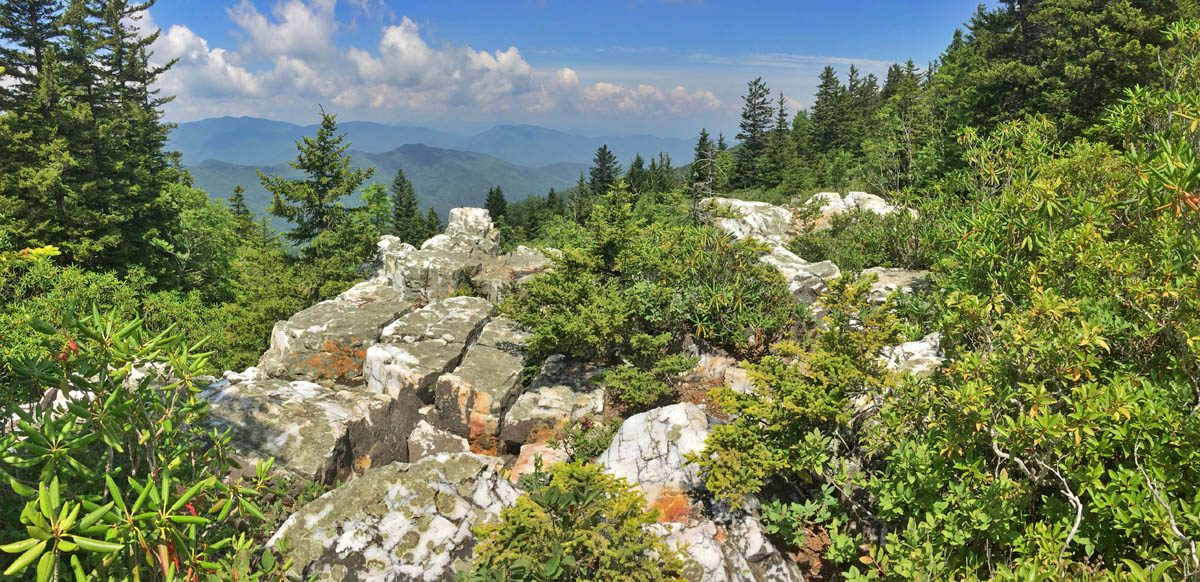
Ridge top forests
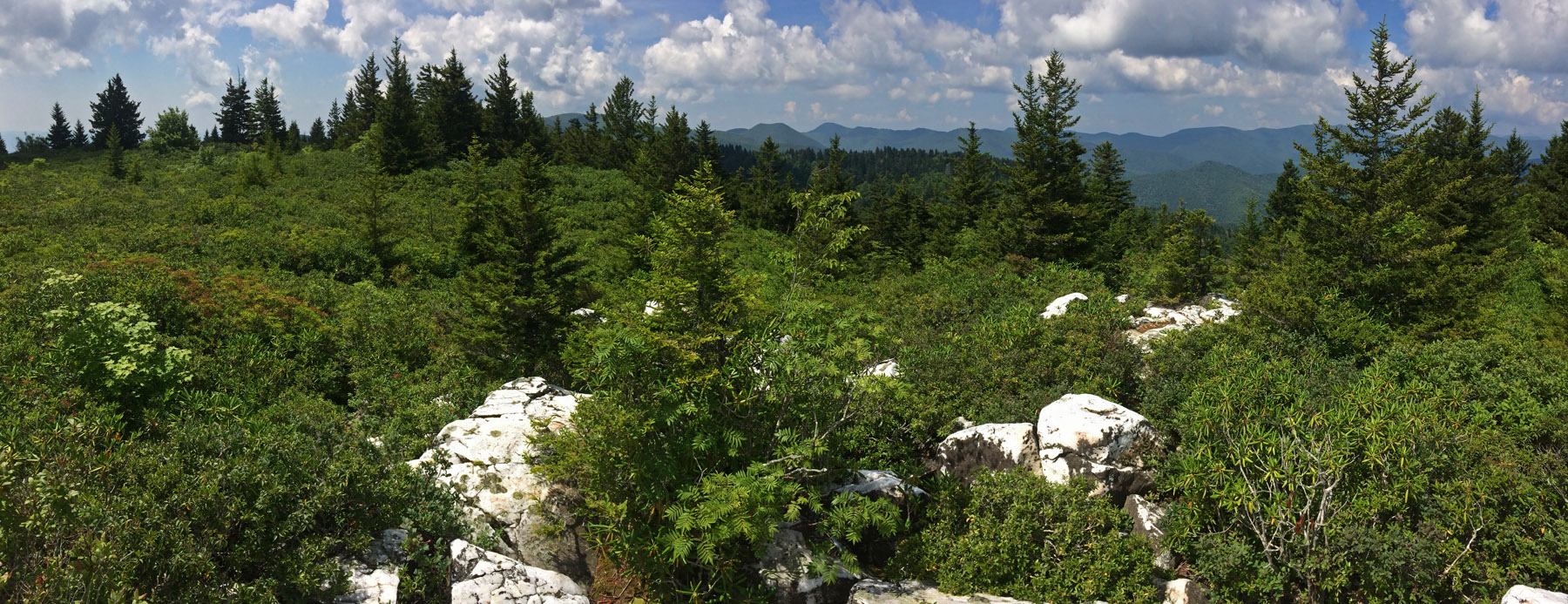
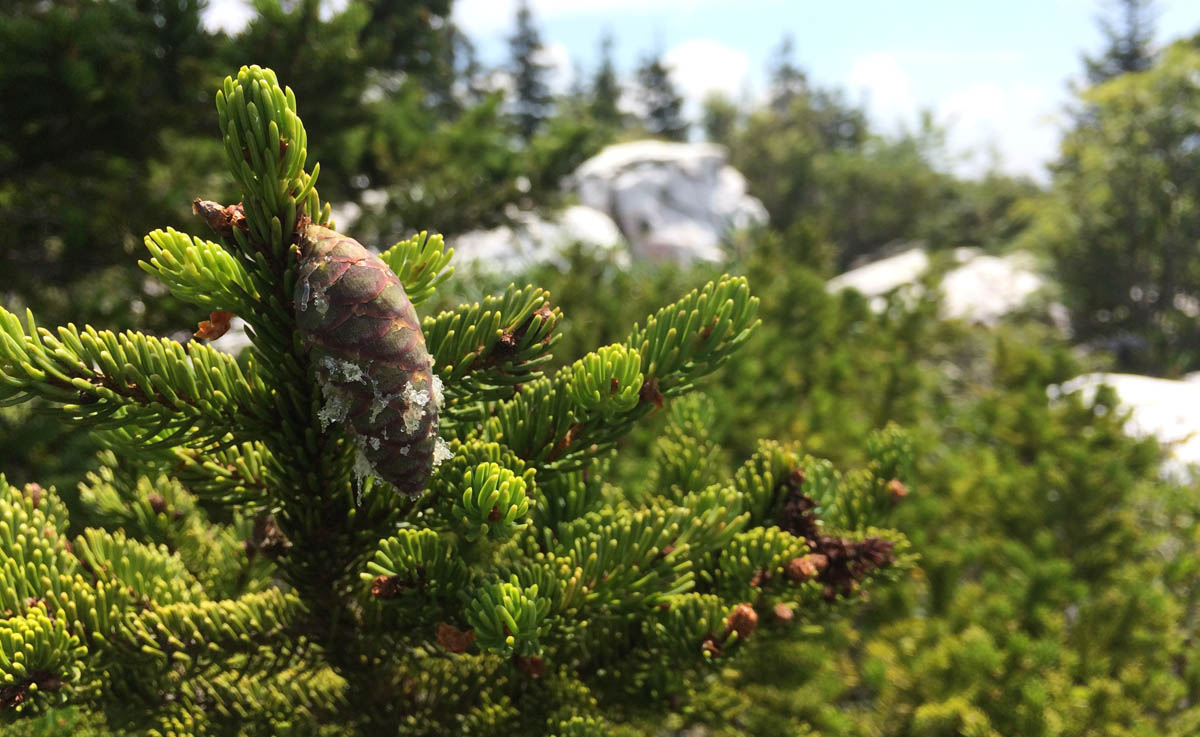

Upland Old-Growth
This was the biggest surprise of the trip–the old-growth deciduous forest along the upper Shining Creek Trail. This is is a forest type I search for every time I visit the Appalachians due to its rarity and on this hike I was lucky to just stumbled upon it. The trees were a mix of mostly yellow birch (Betula alleghaniensis), Sweet Birch (Betula lenta), and Northern red oak (Quercus rubra) with a highly diverse understory.
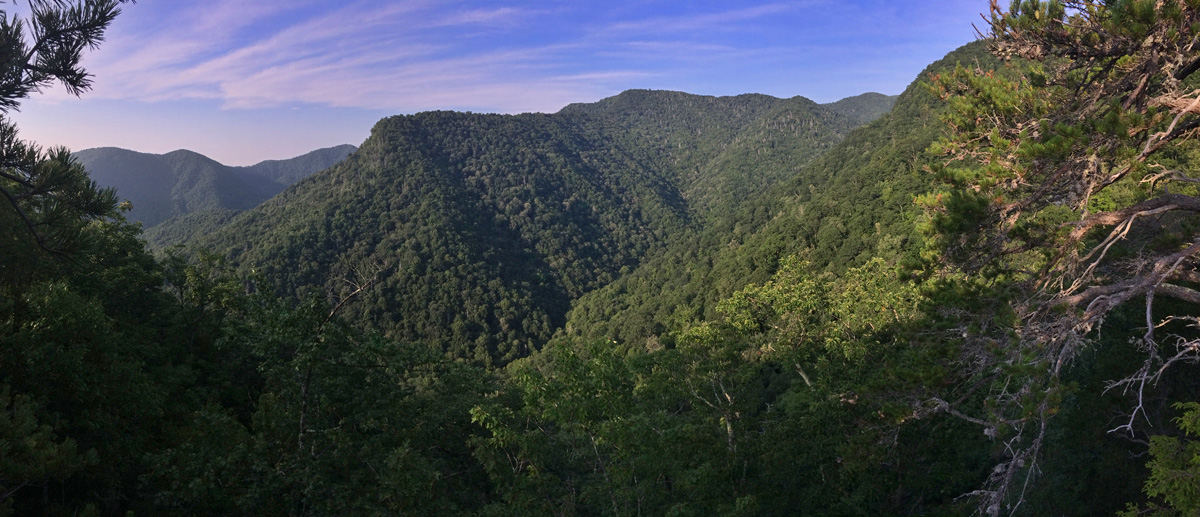
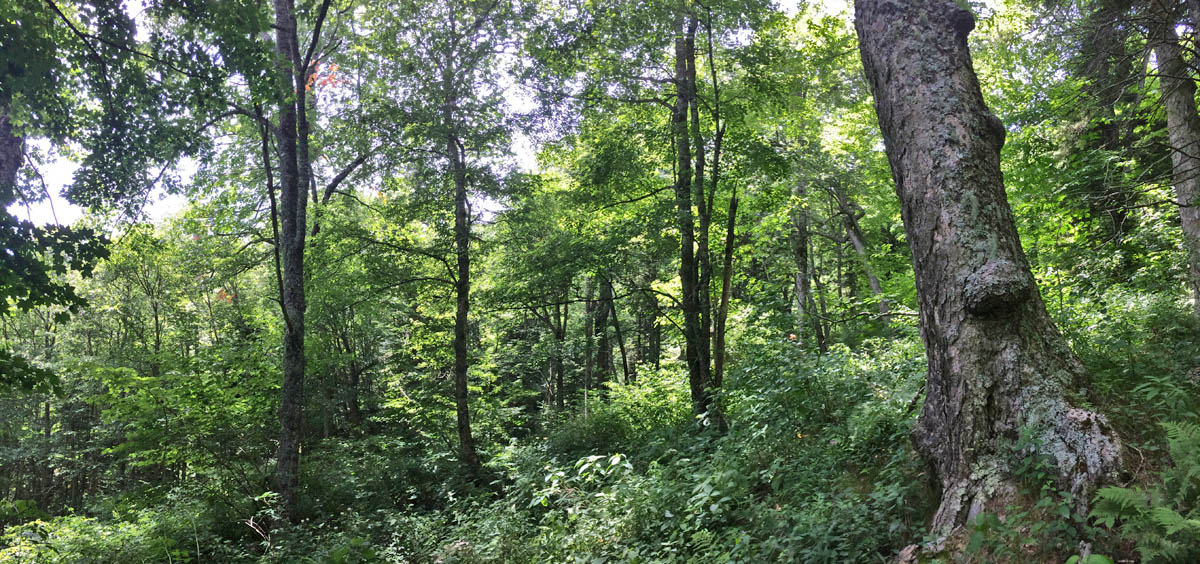
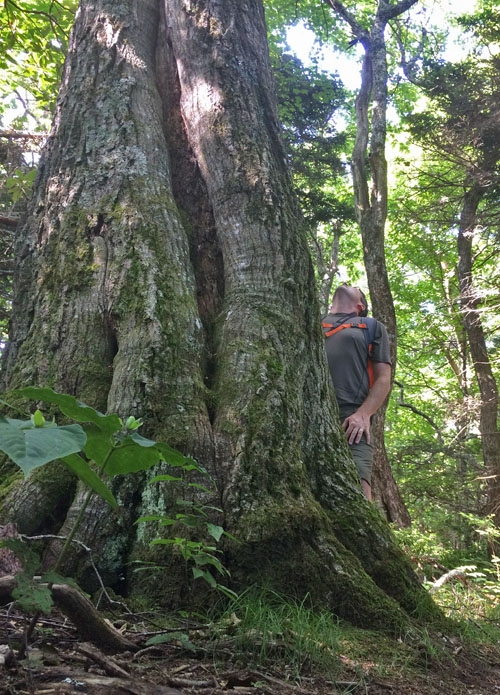
Conifer Highlights
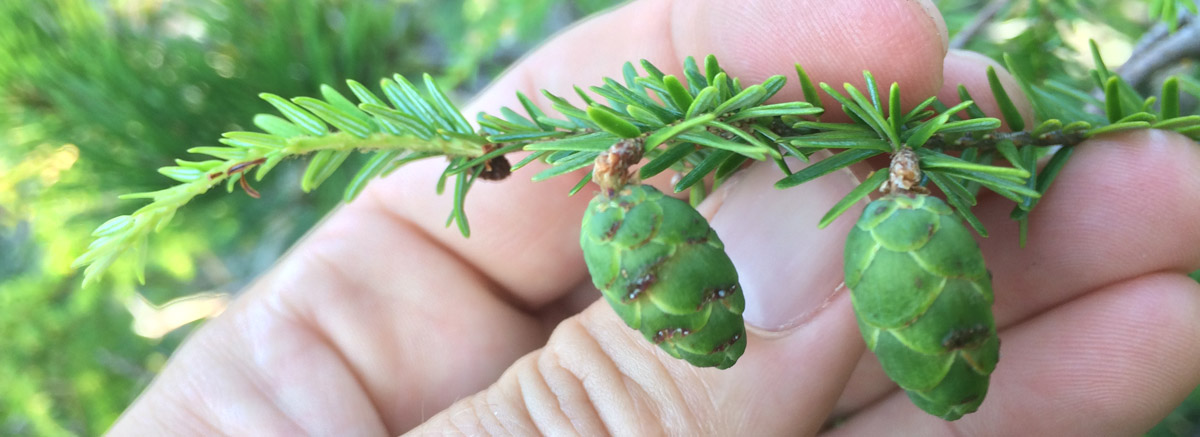
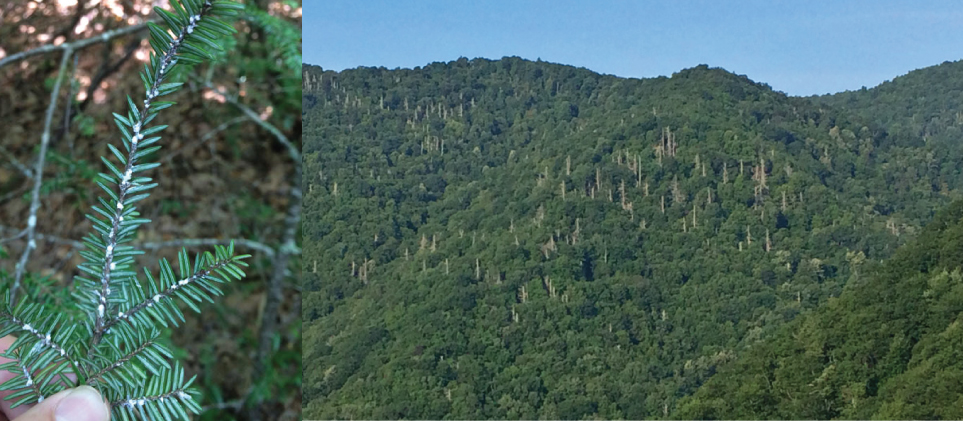
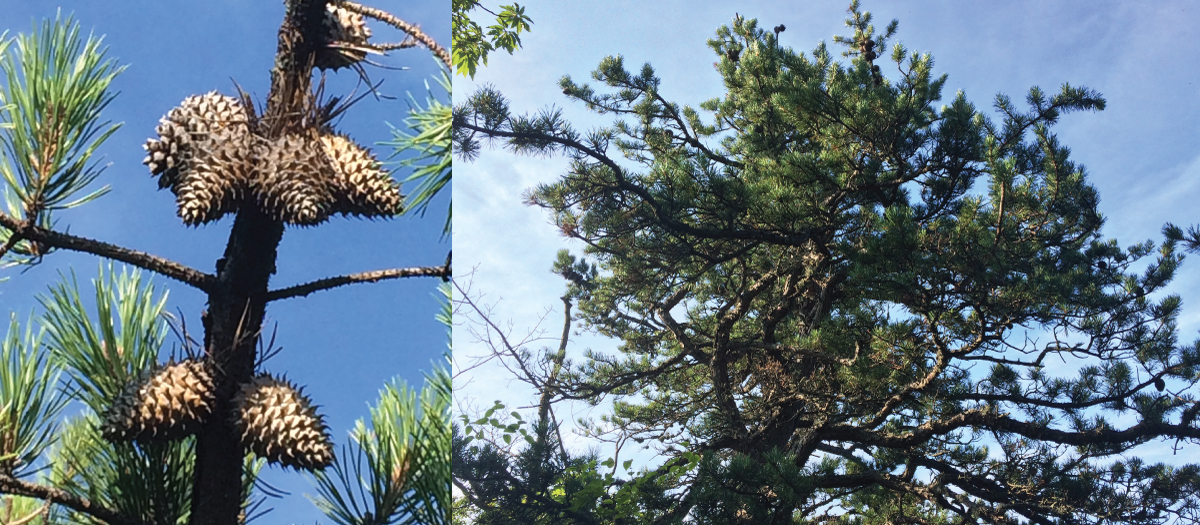
Michael, Thanks for another very informative description of an interesting flora. Makes me want to take another trip along the entire Blue Ridge Parkway. There’s also some very nice old growth eastern forest at the Joyce Kilmer Memorial forest in the Nantahala National Forest in North Carolina, which is unfortunately also affected by that adelgid that you described.
Thanks Bill- the Joyce Kilmer has been on my bucket list since college. Maybe on next year’s visit!